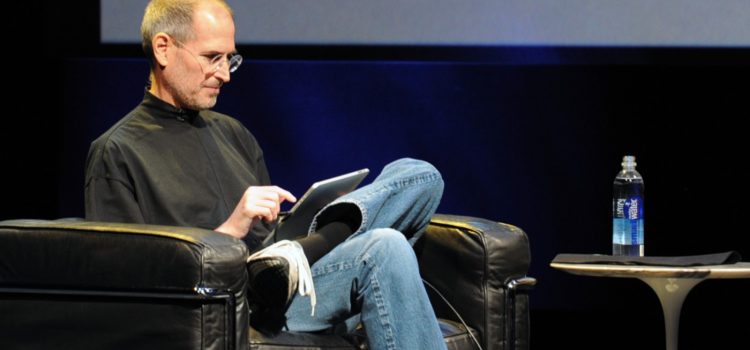

This article is an excerpt from the Shortform book guide to "Steve Jobs" by Walter Isaacson. Shortform has the world's best summaries and analyses of books you should be reading.
Like this article? Sign up for a free trial here.
How did Steve Jobs die? How did Jobs try to treat his cancer?
In 2003, Jobs’s doctor found a tumor on his pancreas. He battled cancer until he died in 2011, but some of his treatments were unconventional.
Here’s how Jobs coped with his pancreatic cancer diagnosis.
Steve Jobs’s Battle with Pancreatic Cancer (2003-2011)
Steve Jobs by Walter Isaacson details Steve Jobs’s pancreatic cancer diagnosis. By his mid-40s, Jobs had already revolutionized the field of computing several times over. Isaacson says that Jobs feared he’d die young and felt driven to accomplish as much as he could within the time he was given. In this, he was prescient.
In 2003, at the age of 48, a tumor was found on his pancreas. Though it was discovered soon enough for treatment, Jobs declined to have surgery and instead insisted on fighting the cancer with alternative medical treatments. (Shortform note: The mass his doctors detected was a pancreatic neuroendocrine tumor, which is rare but more easily treated than other pancreatic cancers. If discovered before they spread, such tumors can be completely removed, although recovery can be long and arduous.) It took nine months for those closest to Jobs to convince him to have the tumor taken out, but in the intervening months, the cancer had spread.
Jobs kept the fact that he still had cancer secret, especially from Apple’s employees and shareholders. By 2008, it had spread to his liver and his illness could not be kept hidden any longer. Apple’s stock went down, and speculation about his health ran wild. (Shortform note: According to Reuters, rumors of Jobs’s failing health began after his emaciated appearance at an iPhone demo in June 2008. Jobs continued to brush off the topic of his health at events in September and October. When he announced that he wouldn’t appear at the next Macworld conference, Time speculated about Apple’s viability without the presence of its charismatic leader.)
At first, Jobs was resistant to having a liver transplant, but when one became available in March 2009, he flew to Memphis for the surgery. The transplant was a success, but the doctors found signs that the cancer had spread even further. Jobs pressed forward on several new projects, such as designing a new corporate campus for Apple. He admitted to Isaacson that if he didn’t have something to work on, it would seem as if he were giving up on life.
Jobs’s final downturn began in late 2010. Always on the cutting edge, Jobs was one of the first people to have their cancer cells genetically sequenced, which allowed doctors to tailor his treatment instead of relying on broad-range chemotherapy. (Shortform note: In the years since Jobs’s diagnosis, gene-sequencing has continued to advance cancer research, helping identify the genetic mutations that lead to the growth of tumors. Making use of these advances, doctors can use molecularly targeted therapies to treat a variety of cancers while reducing the dangerous side effects of other approaches.)
By July 2011, the cancer had reached his bones. His last act at Apple was to arrange a smooth transition of power to those who would carry on in his footsteps. Steve Jobs passed away at the age of 56, surrounded by his family, on October 5, 2011.

———End of Preview———
Like what you just read? Read the rest of the world's best book summary and analysis of Walter Isaacson's "Steve Jobs" at Shortform.
Here's what you'll find in our full Steve Jobs summary:
- A no-fluff look into the life of Steve Jobs
- How Jobs changed the technology landscape
- What it was like to work with and for Steve Jobs






